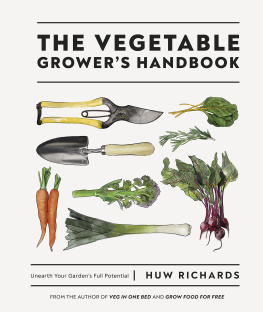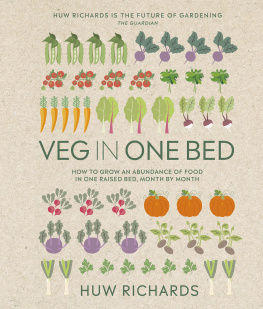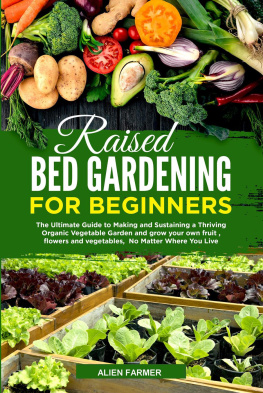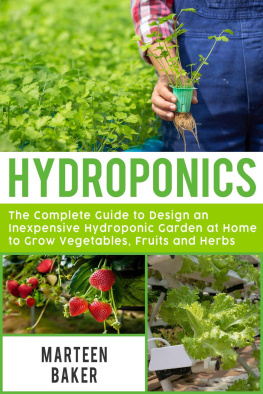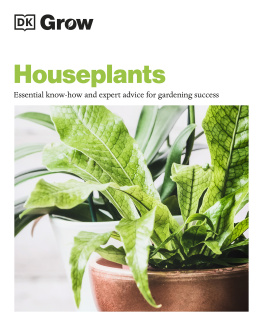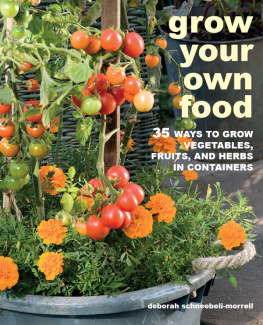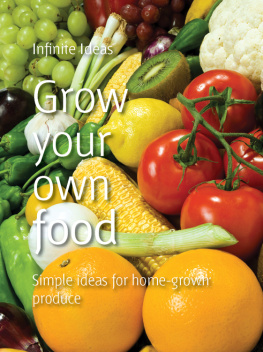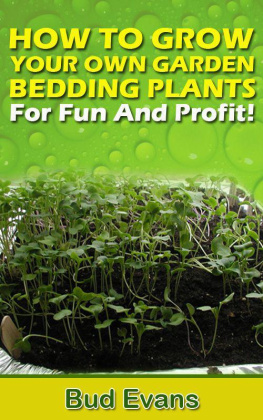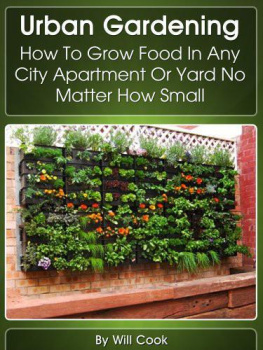Contents
CONTENTS
How to use this eBook
Preferred application settings
For the best reading experience, the following application settings are recommended:
- Orientation: Portrait
- Colour theme: White background
- Scrolling view: [OFF]
- Text alignment: Auto-justification [OFF](if the eBook reader has this feature)
- Auto-hyphenation: [OFF](if the eBook reader has this feature)
- Font style: Publisher default setting [ON](if the eBook reader has this feature)
INTRODUCTION
Imagine eating seasonal produce youve grown and harvested with your own hands as part of every meal. Imagine having unlimited access to your own greengrocers 365 days a year. Imagine growing food that costs next to nothing.
These are not fantasies but realistic aims and objectives. And I can assure you they are achievable. How can I be so sure? Over the last 12 months, I challenged myself to grow food for free. Now I want to pass on what I learned on that journey, including strategies to deal with any issues that may arise. I also offer different growing options, depending on whether your space is small or large, in the country or in the city, so you can choose what works best for you. Everything in this book has been tried and tested, and I hope that the information it contains gives you the confidence to grow food that tastes just as good as you imagined.
WHY COST IS NO OBSTACLE
Over the years, I have heard a whole host of reasons why people are reluctant to start growing their own food, and one of the most common is that it is too expensive. I find it deeply saddening that this misconception persists in society and that, as a result, so many people are not only put off, but are also missing out on a fantastic opportunity. Fired up by a strong desire to set the record straight, Ive written this book with the intention of passing on all the information you need to grow food for free in a single location.
Growing food for free involves basic gardening techniques, such as sowing and planting, but making a success of it requires you to look at things a little differently. Changing your mindset and seeing the value in what others might regard as trash is key. A broken pallet from a building site can be split and made into a compost bin, a box of empty milk cartons from a caf will provide vital water storage, and a pile of cardboard outside a shop entrance is the perfect material for suppressing weeds around your crops.
WHAT DOES FREE MEAN?
Before we get started on the growing journey, I feel it is important to set down my definition of free. To me, free means obtaining something without any money changing hands. A simple example would be exchanging seeds of a vegetable you dont like for those of one youd much rather grow. And in this book, free doesnt mean for no effort because and lets get real here it is impossible to grow food without putting in time and energy. Even foraging for wild food requires effort, as does buying food from a shop. Of course, money may make some tasks easier and save time, but there are ways to avoid spending if you are resourceful and open to opportunity.
TAKING SMALL STEPS
Giving up too soon is the one thing that will prevent you enjoying free food in abundance. To prevent this happening and ensure successful outcomes, start slowly so you dont feel overwhelmed. Always split bigger projects into smaller, attainable goals and write down these smaller tasks in the form of a to-do list. By carrying out lots of smaller tasks when time permits and crossing them off the list, you begin to think of yourself as highly efficient and productive. Having made lots of small steps, you will feel youre constantly making great progress, and that will keep you motivated and on track. In the following pages, Ill explain what I mean by bartering and how this useful skill is key to growing food for free.


THE POWER OF BARTER
Now that Ive explained my definition of free, Id like to introduce you to what I believe is the best alternative out there to money the skill ofbartering.
The Oxford English Dictionary defines bartering as the exchange of goods or services for other goods or services without using money. What thisstraight-to-the point, objective definition cant describe is how powerful bartering can be when used as a framework for social interaction. Before monetary systems were developed,people traded by bartering goods and services, and each exchange involved engaging with another person or group, which is what I love about it.
HOW AND WHAT TO BARTER
A key aspect of bartering is the lack of guidelines; there is no one size fits all system. Bartering, or swapping one useful thing for another, is a tool thatanyone can use, and it has the key advantage of flexibility. You can offer different bartering items, depending on what is of most interest or value to the person you are tradingwith, or it can be as simple as doing someone a favour by taking away what they (but not you) consider waste.
You dont even have to offer a physical item. Your time, your skills, and your knowledge in a particular area are also a form of currency. If, for example, someone isoffering fence posts, but they are more interested in your guitar-playing skills than the items youve put up for exchange, you could offer them a guitar lesson instead.
BARTERING IS A TOOL THAT
ANYONE CAN USE, AND IT
HAS THE KEY ADVANTAGE
OF FLEXIBILITY
CONNECTING WITH OTHERS
Its exciting when you take money out of the equation because every exchange is unique. The individuals or groups involved must negotiate the best agreement forall, and there can be quite a thrill to this exchange. If you have never bartered before, you will be pleasantly surprised at the simplicity of the process, the enthusiasm of thoseengaging in it, and the amazing range of things on offer. Bartering is one of those things which can seem scary at first, but you very quickly ease into it.
This book features many examples of useful things you can obtain through bartering, such as composting materials and seed packets. And for me, one of the key benefitsis making new connections with people. Over time you will find that the people you barter with will start offering items without you even asking, or put you in contact with otherlike-minded people. You then have the option of creating a small bartering group, which in turn makes it much easier to set up . You can do as little or as much bartering as you like, but I find it a much more rewarding form of exchange than handing over money.
GROW FOOD FOR FREE | THE POWER OF BARTER
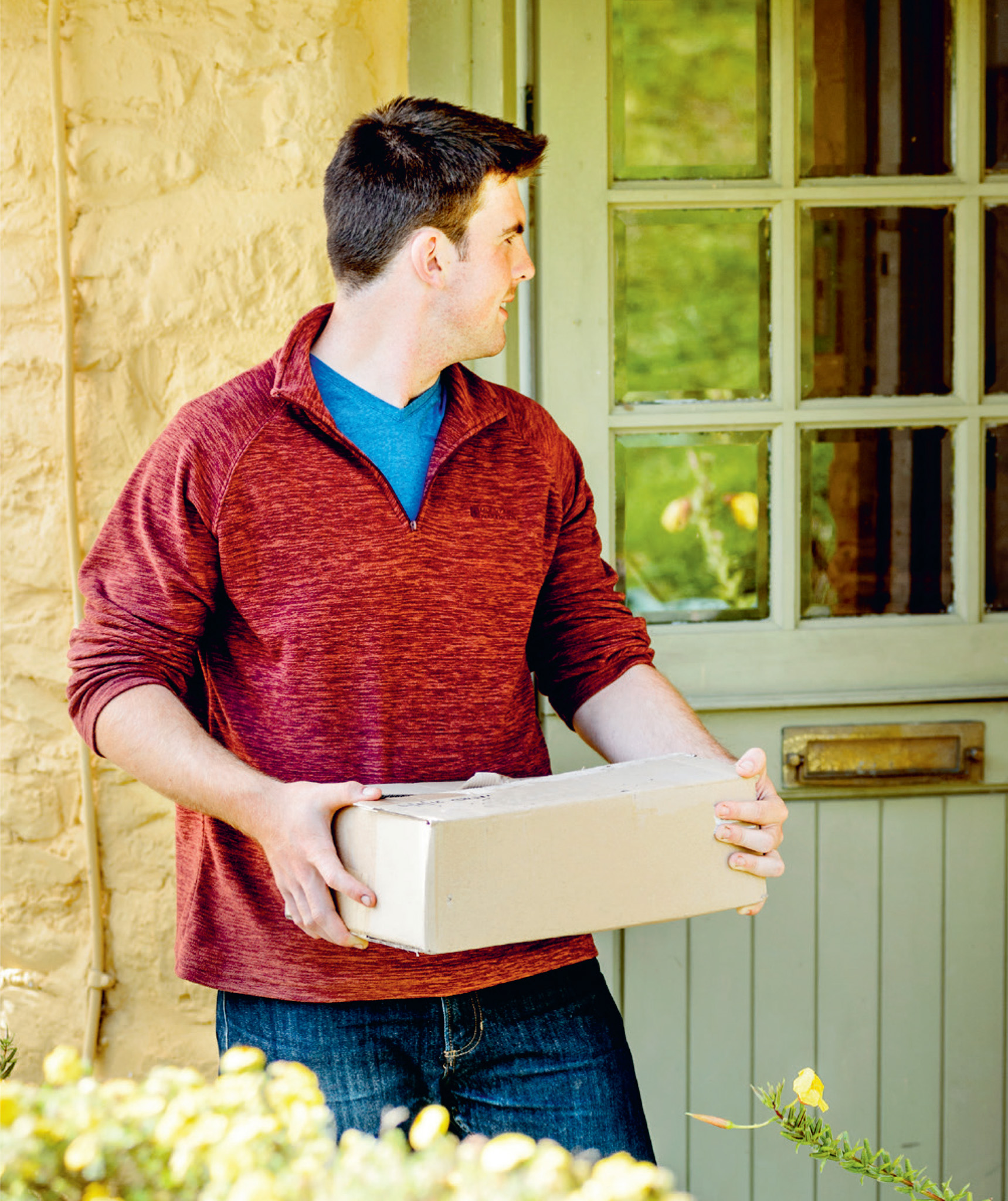
Im always collecting odd items from neighbours
GROW FOOD FOR FREE | THE POWER OF BARTER


